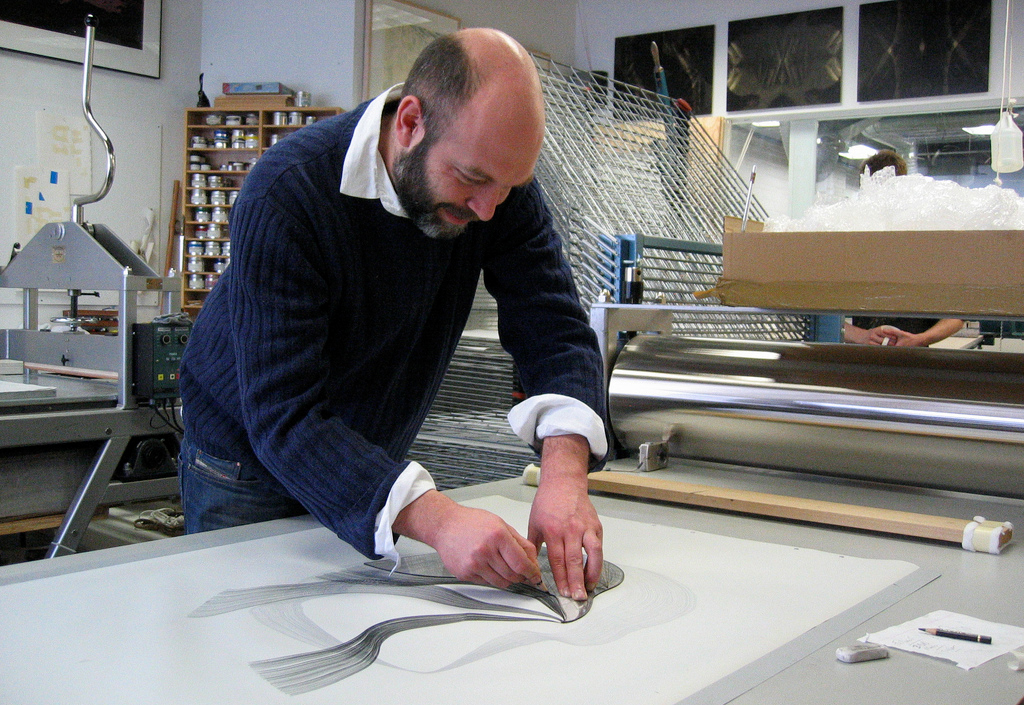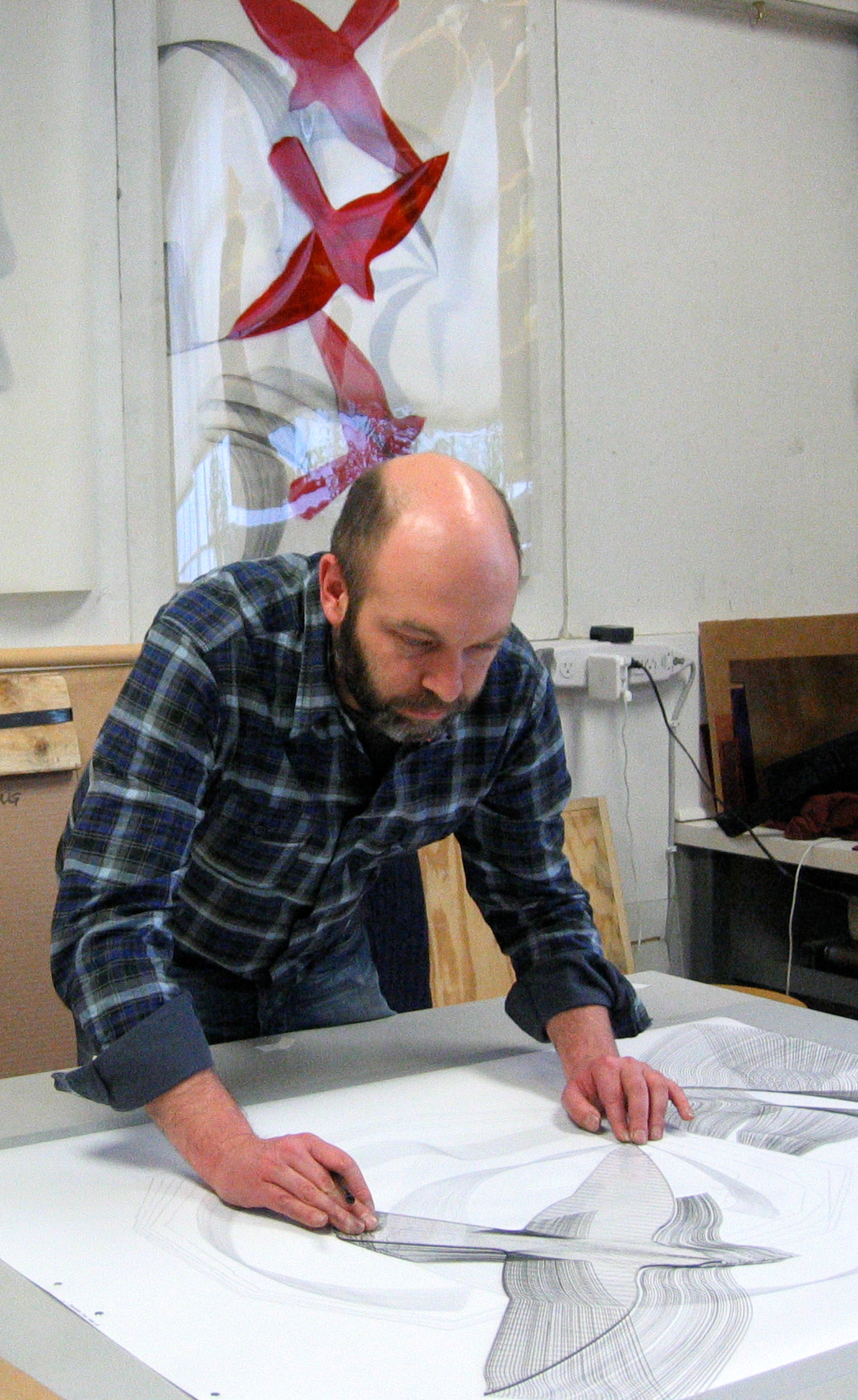
Born 1970, Mexico City, Mexico
Carlos Amorales was born Carlos Aguirre Morales in 1970 to the conceptual artists Rowena Morales and Carlos Aguirre. At nineteen, determined to distinguish his own art and identity from those of his parents, Amorales immigrated to the Netherlands to study at the Rijksakademie van Beeldende Kunsten (1992–95) and the Gerrit Rietveld Academie (1996–97), both in Amsterdam. While researching masks at the Rijksakademie, he conceived the identity “Amorales,” a contraction of his parents’ surnames that connotes amorality in Spanish. The identity initially existed as a concept in Identity Loan Contract (1996), wherein Amorales permitted the Dutch writer Gabriel Lester to adopt his identity for one month. Meanwhile, Amorales traveled to Mexico to commission self-portrait lucha libre masks, manifestations of his fictional identity that would be incorporated into a series of performances inspired by Mexican professional wrestling. In these performances, titled Los Amorales (1996–2001), two luchadores, both wearing identical Amorales masks, would grapple in the galleries and art institutions of Europe, the United States, and Mexico. As the wrestling matches gained notoriety throughout the art world, so did Amorales and the name by which he and his artwork are now known globally.

Amorales’s artistic practice explores the constructs and ambiguities of language and the intersection of reality and fantasy. Liquid Archive is his digital collection of more than fifteen hundred vector graphics that he uses in his animation, installation, and graphic artwork. At Highpoint Editions, Amorales designed several series of prints (2010) with the Liquid Archive’s silhouettes of animals, the human body, and landmasses, which he arranged into a variety of surreal figures and compositions.
Amorales had previously used the Liquid Archive in the design of album covers for Nuevos Ricos (2004–9), a bootleg record label that he co-founded with the artists Julian Lede and André Pahl. More recently, he has been working on a typographic project that uses an encrypted alphabet to translate texts and create compositions for multimedia artwork, challenging the hierarchies of language and sign making. A question that continues to resurface in Amorales’s practice is one he often poses himself: “Does art exist outside the art world? At the end,” he writes, “the image that comes to mind is that of a mask playing a flute.”1

Amorales has had solo exhibitions at Museo de Contemporáneo, Monterrey, Mexico (2019); Museo de Arte Moderno de Medellín, Colombia (2017); the Power Plant, Toronto (2015); and Museo Tamayo, Mexico City (2013). He has also represented the Netherlands (2003) and Mexico (2017) at the Venice Biennale and has participated in numerous other biennials, including Quebec City’s Manif d’Art (2017), Cuba’s Bienal de la Habana (2015, 2009), the Berlin Biennale (2014, 2001), Belgium’s Manifesta 9 (2012), and New York’s Performa (2007). His work has also been featured in group shows at the Museo de la Ciudad de México (2018); De Appel, Amsterdam (2016); Solomon R. Guggenheim Museum, New York (2014); and other venues. Amorales lives and works in Mexico City with his wife, the performance artist Galia Eibenschutz, and their two children.
—Ian Karp
Notes
Carlos Amorales et al., Carlos Amorales: Axioms for Action (1996–2018) (exh. cat.), Museo Universitario Arte Contemporáneo (Mexico City, 2018), p. 100. ↩︎
- Cat. 2. Amorales
- Cat. 3. Amorales
- Cat. 4. Amorales
- Cat. 5. Amorales
- Cat. 6. Amorales
- Cat. 7. Amorales
- Cat. 8. Amorales
- Cat. 9. Amorales
- Cat. 10. Amorales
- Cat. 11. Amorales
- Cat. 12. Amorales
- Cat. 13. Amorales
- Cat. 14. Amorales
- Cat. 15. Amorales
- Cat. 16. Amorales
- Cat. 17. Amorales
- Cat. 18. Amorales
- Cat. 19. Amorales
- Cat. 20. Amorales
- Cat. 21. Amorales
- Cat. 22. Amorales
- Cat. 23. Amorales